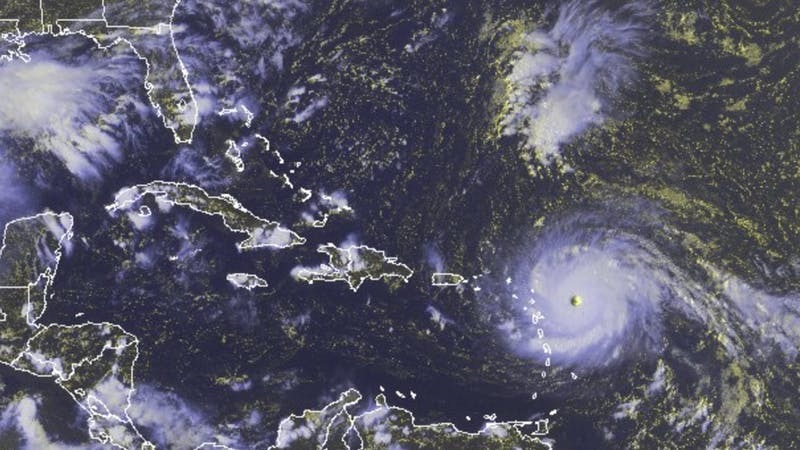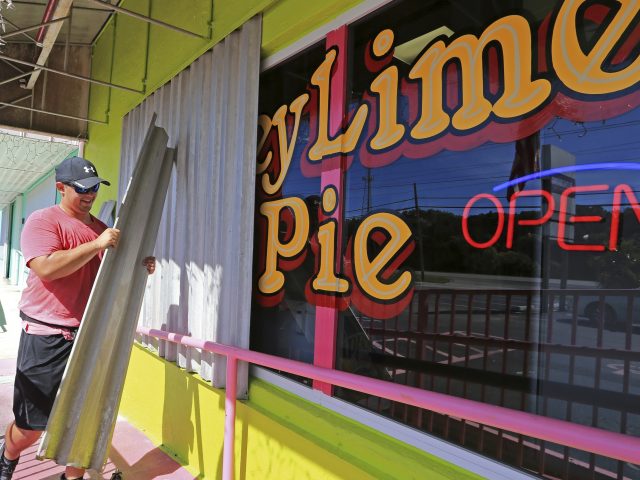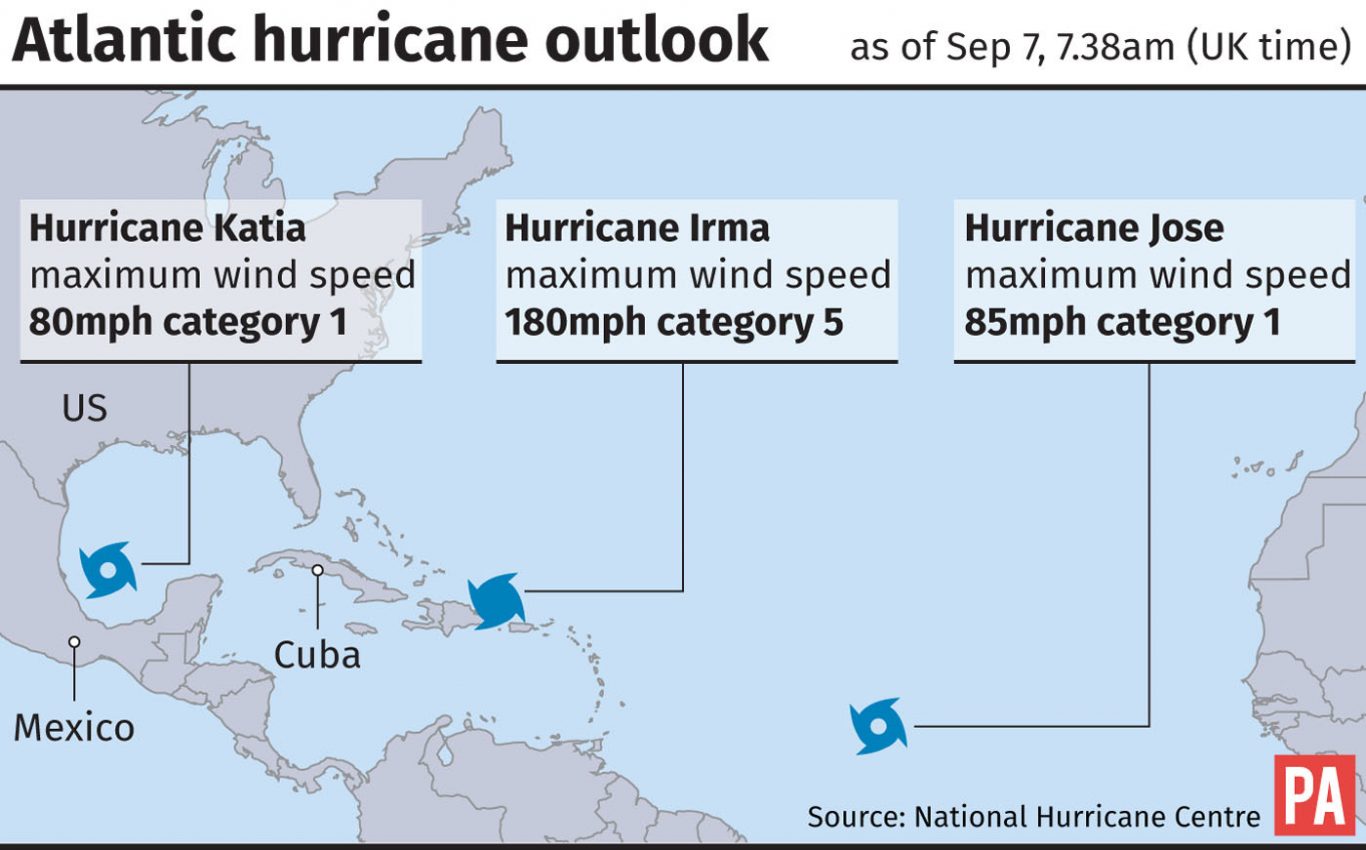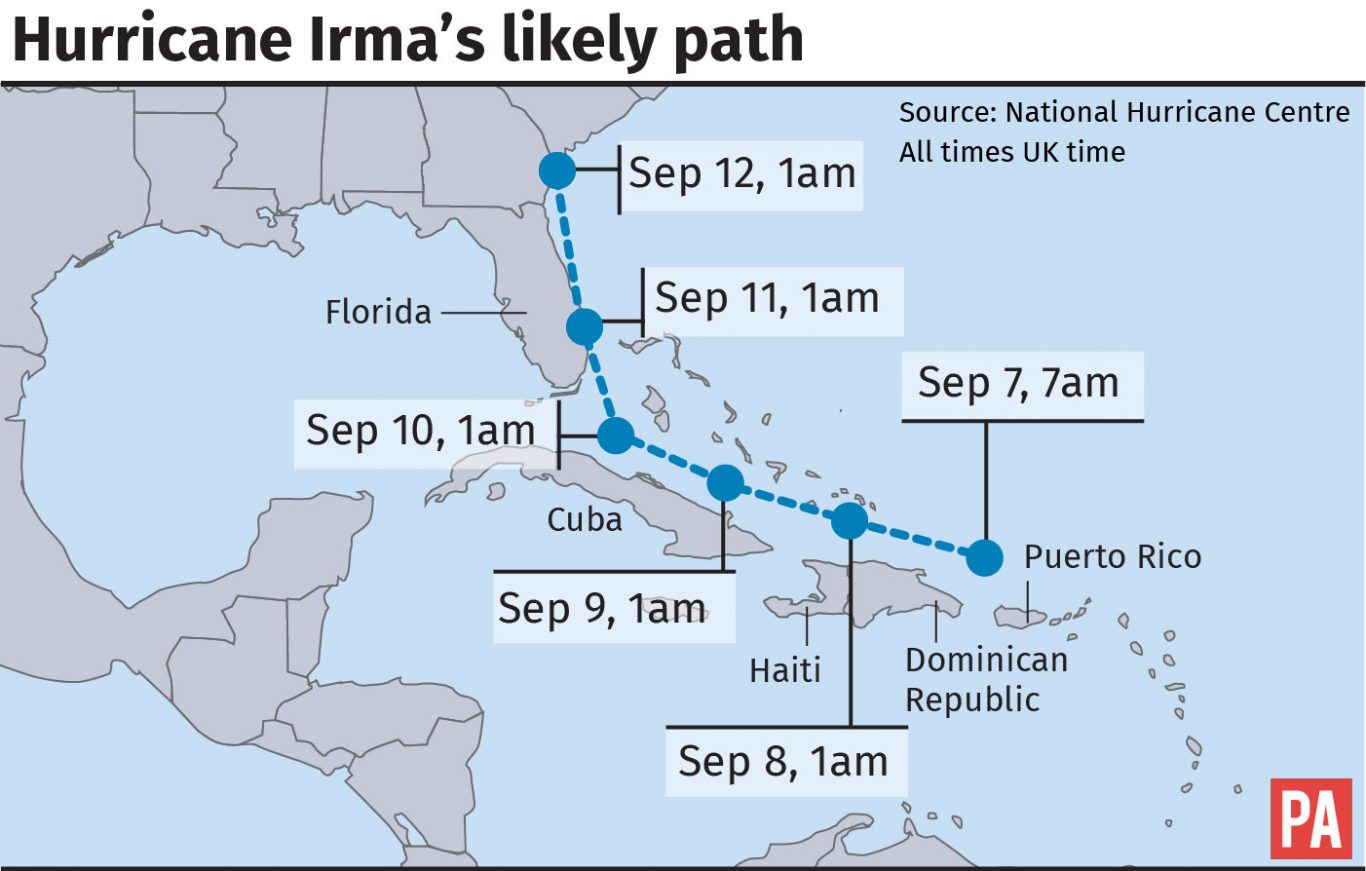
FLORIDA is on high alert for the expected arrival of Hurricane Irma, which continues to tear a deadly path trough the Caribbean, leaving devastation in its wake.
The storm destroyed nearly all buildings on the island of Barbuda on Wednesday, killing a two-year-old child as a family tried to escape, before wreaking havoc on the French territories of St Martin and St Barts, leaving at least seven dead.
Foreign Secretary Boris Johnson said the UK is “taking swift action to respond” to the disaster after speaking to the chief minister of Anguilla, a British overseas territory that was among the first islands to be hit.
Just spoke to Anguilla’s Chief Minister on #HurricaneIrma. UK providing support & urge Brits to follow travel advice https://t.co/CkU52Ikmvm
— Boris Johnson (@BorisJohnson) September 6, 2017
Britons in the region have been urged to follow evacuation orders, while states of emergency have been declared in Puerto Rico, Cuba and Florida – amid fears Miami could be struck directly by the hurricane.
Two separate hurricanes are adding to the region’s stormy conditions. Hurricane Katia is drifting in the south-western gulf of Mexico, while Jose “continues intensifying” over the central Atlantic as it follows in Irma’s wake.
A massive operation is under way to evacuate people away from coastal areas on Haiti and the Dominican Republic, where aid workers are moving residents into temporary shelters before Irma hits.
On Thursday morning Irma’s eye was just north of the coast of Puerto Rico, lashing the island with heavy rain and high winds and leaving more than 900,000 people without power. It came less close to the capital San Juan than expected, with its last location about 140 miles north-west of the city.
Irma is moving at around 16mph on a course forecast to take it toward the Bahamas and the British overseas territory of the Turks and Caicos Islands.
An alert sent by the Department of Disaster Management and Emergencies on Grand Turk urged residents near the coasts to take shelter on higher ground, warning the storm surge could raise water levels by 15 to 20 feet above the normal tide. Some US government personnel have been ordered to leave the Bahamas before the hurricane’s arrival, expected on Friday.
On the US mainland authorities fear the hurricane may slam into the Florida peninsula over the weekend, just days after storm Harvey devastated Texas.
With 1,350 miles of coastline, the most in the continental United States, Florida has roughly 2.5 million homes in hazard zones, more than three times that of any other state, according to Federal Emergency Management Agency data.
The latest forecasts suggest Irma’s most destructive winds could carve up much of Florida’s priciest real estate, damaging properties from the Florida Keys through to Jacksonville as it swirls north. Officials are making preparations to potentially shut down two nuclear power stations in the Sunshine State, while evacuation orders have been given in the Florida Keys.
Donald Trump, whose Mar-a-Lago resort in Palm Beach could be affected by the storm, said his administration is monitoring Irma closely.
“It looks like it could be something that could be not good, believe me not good,” the US president said.
'President Donald J. Trump Approves Emergency Declarations'
➡️https://t.co/xSHSyNkvuP
➡️https://t.co/UbBSFOhMM7
➡️https://t.co/xWOfp9Z9iR pic.twitter.com/qoJOM54Gy8— Donald J. Trump (@realDonaldTrump) September 6, 2017
With sustained winds of 185mph, the category five hurricane is the most powerful Atlantic Ocean hurricane on record.
It is only the second time anywhere in the world a storm has been recorded maintaining such windspeeds for more than 24 hours, after typhoon Haiyan in 2013, according to an expert at the University of Colorado.
A British naval ship has been deployed to help deal with the aftermath with 40 Royal Marines on board, as well as army engineers and equipment, as authorities struggle to bring aid to smaller islands.


Enjoy the convenience of having The Sunday Post delivered as a digital ePaper straight to your smartphone, tablet or computer.
Subscribe for only £5.49 a month and enjoy all the benefits of the printed paper as a digital replica.
Subscribe

